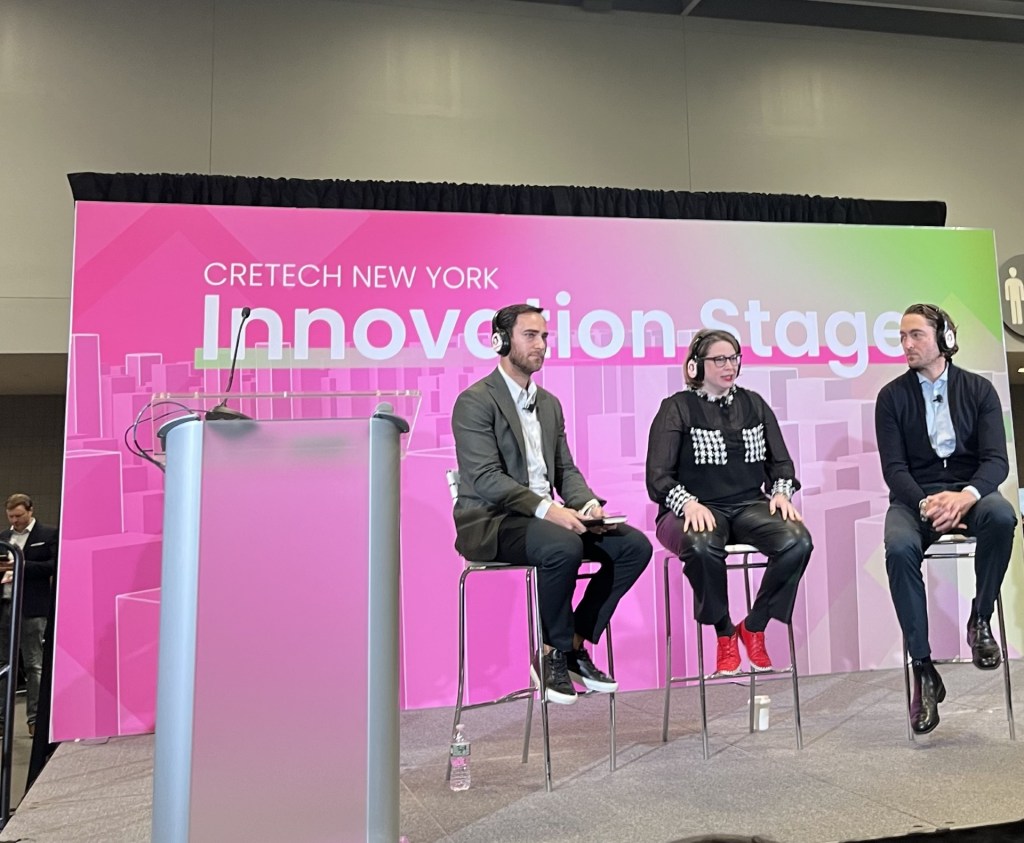CREtech Special Report: Practical Tech in Tough Times
Using AI for nearly every aspect of operations may seem appealing, but it’s crucial to be selective.

The message put forth by panelists across CREtech New York 2024’s second day was clear: using technology for nearly every aspect of operations may seem appealing, but it only truly makes sense when it aligns with the specific goals, resources and tenant bases that the stakeholders are serving.
These sentiments were seen the most in discussions about retrofitting properties to be more energy-efficient, sifting out practical uses of artificial intelligence when it may be unnecessary, as well as in discussions about the most practical investments for climate-concerned venture capitalists.
Myths and facts
On the decarbonization front, a panel of sustainability leaders debunked myths around the high costs and feasibility of retrofitting office and multifamily buildings, with a focus on New York City.
Jonathan Lemmond, senior director of sustainable operations at JLL, pointed to regulations such as Local Law 97, as well as grants from New York State’s Energy Research & Development Authority as creating the perfect opportunity for retrofitting mechanical systems and implementing clean energy-focused technologies. “The capex invested in these actions results in lower operational costs, higher energy security, as well as regulatory resiliency and improved employee attraction,” Lemmond said.
LISTEN TO: Sustainability Street: Inside CRE’s Flood Insurance Quandary
But a lot of these high costs can be avoided if owners and operators are able to accurately monitor their energy consumption. “The reality is that this myth of it being expensive and complex can easily become a truth unless teams are using a data-informed process to make strategic decisions,” said Jennifer Chalos, a senior sustainability consultant at Arup. At the same time, Chalos advises stakeholders to do the best they can, acknowledging the difficulties of replacing a gas boiler with expensive and heavy heat pumps. “It’s a journey, it can be implemented over time, and it doesn’t have to be all or nothing,” Chalos said.
In fact, retrofits may not be a choice for some owners and operators, given that two-thirds of Fortune 500 companies have significant decarbonization goals, according to Lemmond. To this end, Lemmond sees some decarbonization initiatives as stemming more from the energy consumption habits of landlords and tenants than a particular BMS or the installation of heat pumps. “These changes may not be a tech-solvable issue,” he said.
Climate tech investors share many of these views, seeing adaptability and speed to market as the most promising aspects of a start-up, especially as the country has already exceeded its 1.5 degree Celsius worldwide average temperature increase. Now the focus is shifting from prevention to adaptation. “We’ll blow past 2 degrees; we not only need to be thinking about how we need to reduce carbon emissions, we also need to be thinking about adaptive technologies,” advised Raj Singh, managing partner at JLL Spark. “Some of these strategies are quite risky, and I really hope that we can avoid some of them,” he said.
AI: sifting through the hype

Another area where panelists were more sober-minded than sales-oriented was in the investment and implantation of artificial intelligence platforms across operations.
Scott Rednor, managing partner at Red Bear Capital sees artificial intelligence as being best suited for augmenting existing technologies and facilitating the analysis of data akin to that mentioned by Chalos, rather than an outright replacement for them. “Our products and services that we are building in the ecosystem are for working with real estate companies, not trying to displace them” he said.
This extends the brokerage side, where the panelists advise making AI more of an improvement and a way of combining for Microsoft or Google productivity programs and CRMs, or as Cushman & Wakefield’s Jason Greenstone put it, “making it a cohesive product vs. a Band-Aid.”
To determine if an AI platform is the right fit, Greenstone suggests sorting possible solutions into one or two platforms: nice to have and need to have. “Solving a permitting problem is a need to have if you’re McDonald’s and opening stores, but a CRM is something that you likely already have,” he said.
Where AI becomes more of the latter, however, is in more competitive tasks such as foot traffic monitoring. “For instance, if someone would ask for traffic counts, we would place four people on different corners of the street,” Greenstone said. Now, operators can just use Placer.ai.
In the end, the technologies’ rapid evolution may lead to uses of AI becoming the deciding factor for the adoptions of certain proptech solutions over others. “It will happen the minute someone walks into a pitch and loses it because a client says, ‘we picked them because of the AI technology’,” Greenstone predicted.







You must be logged in to post a comment.